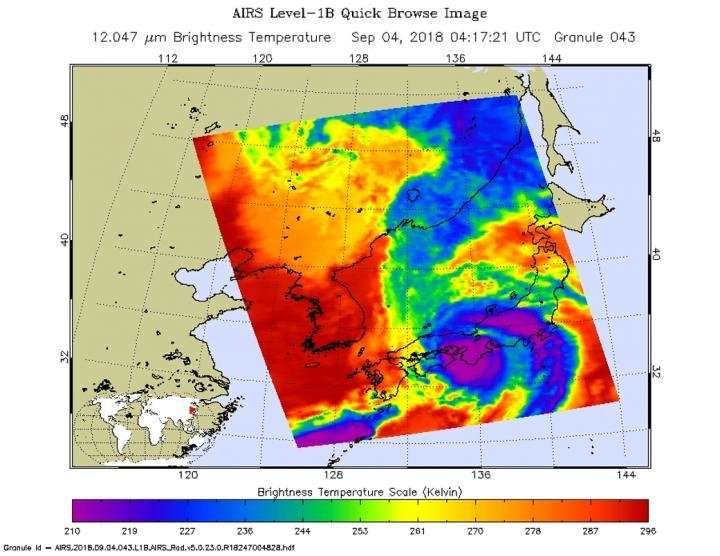NASA sees landfall of Tropical Storm Jebi

When NASA's Aqua satellite passed over Tropical Storm Jebi on Sept. 4 at 12:17 a.m. EDT (417 UTC) it had made landfall in southeastern Japan. The Atmospheric Infrared Sounder or AIRS instrument analyzed the storm in infrared light which provides temperature information. Temperature is important when trying to understand how strong storms can be. The higher the cloud tops, the colder and the stronger they are.
AIRS saw coldest cloud top temperatures being pushed away from the center by strong vertical wind shear. Those cloud top temperatures were as cold as minus 63 degrees Fahrenheit (minus 53 degrees Celsius). Storms with cloud top temperatures that cold have the capability to produce heavy rainfall.
At 11 a.m. EDT (1500 UTC) on Sept. 4, the Joint Typhoon Warning Center issued the final warning on Jebi. At that time the center of Jebi was located near latitude 38.9 degrees north and longitude 137.7 degrees east. The tropical storm was about 185 nautical miles west-southwest of Misawa, Japan. Jebi was moving toward the north-northeast at 45 mph (39 knots/72kph). Maximum sustained winds were near 63 mph (55 knots/102 kph) with higher gusts.
Jebi's center crossed near Kyoto before it emerged into the Sea of Japan where it is getting caught up in the mid-latitude westerly jet stream. Jebi is in the process of becoming extra-tropical over the Sea of Japan as its wind field expands. Jebi should finish transition by Sept 5.
Provided by NASA's Goddard Space Flight Center




















